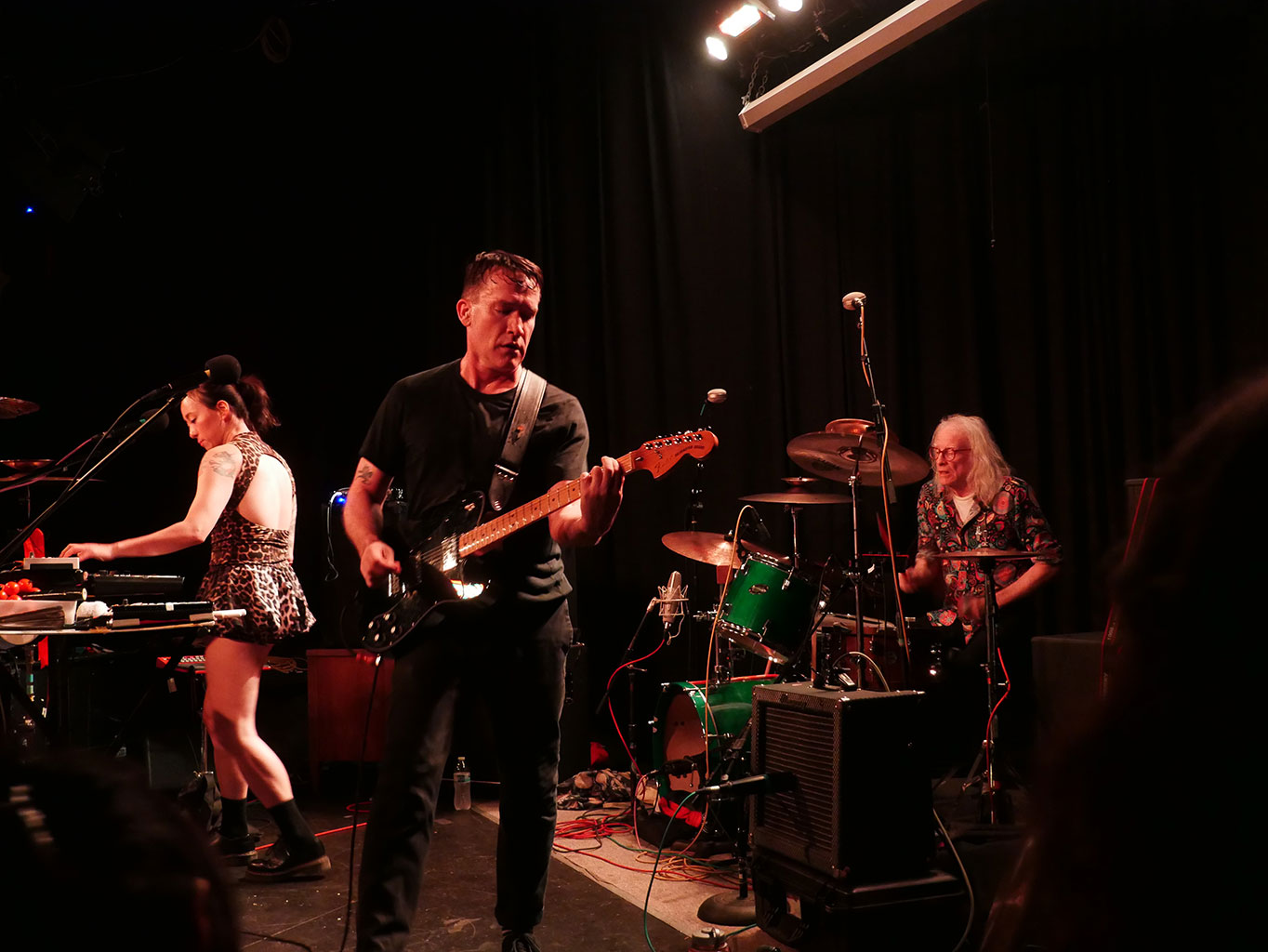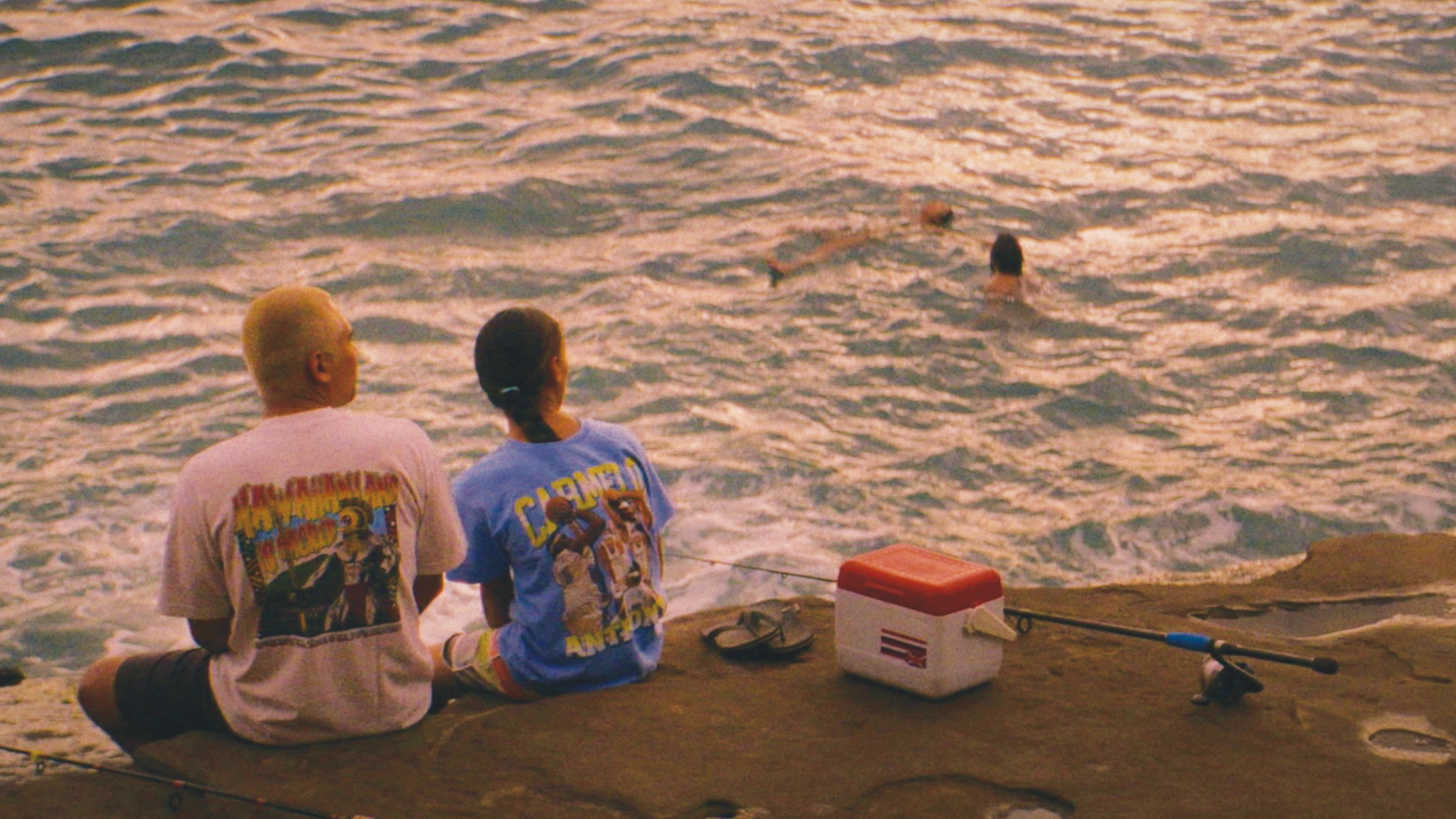
Moments Drawn from Real-Life Experiences
Central to the narrative of Moloka’i Bound are the everyday experiences of Tengan and the film’s lead actor, Holden Mandrial-Santos, who both grew up in Kāne’ohe on the island of O‘ahu. The two started working together in a filmmaking capacity shortly after becoming roommates in 2017. Less than a year later, Mandrial-Santos acted in Tengan’s first short film, Mauka to Makai (2019).
“We just have deep conversations all the time about how proud we are to have grown up where we grew up, and we haven’t really seen it depicted in the way that we know it to be true,” Tengan explains.
“For me, it’s definitely having an opportunity to tell the stories of where I come from and being able to represent the people that I’ve grown up with,” Mandrial-Santos says, regarding what draws him to the work. “Maybe it’s selfish, but they’re so important to me that I want their voices to be heard and for them to feel proud that there is someone telling our stories out there.”
Throughout Moloka’i Bound, Madrial-Santos plays Kainoa — someone who, after being released from prison, makes big strides towards creating a better life for himself. To help him get off his feet, his sister’s family grants him permission to stay with them, and his teen niece begrudgingly gives him her bedroom — all on the condition that he stays on the straight and narrow. Another promising development comes when Kainoa finds meaningful employment pounding poi, a Native Hawaiʻian cultural food.
Most importantly, he manages to rekindle his relationship with his son, Jonathan, and in some moments, even to get back in the good graces of his son’s mother, his ex-girlfriend. At the height of their reconnection — though it never reaches the level of rekindling he secretly hopes for — she “trusts” Kainoa to take Jonathan out for a long fishing adventure, even if the trust comes across like a doubt-saddled leap of faith.
Everything seems to be trending in the right direction, but self-sabotage is ever around the corner. Kainoa remains embattled in the struggle between reforming himself and falling back into risky behaviors that threaten his dearest relationships.
“I’m always interested in nature versus nurture — and that push and pull that we all have within us,” says Tengan, whose work often deals with the complex journeys of paternal figures. “Especially in Hawaiʻi, where it’s… such a beautiful environment, in so many ways, but there’s still so many hardships that people are dealing with all the time.”
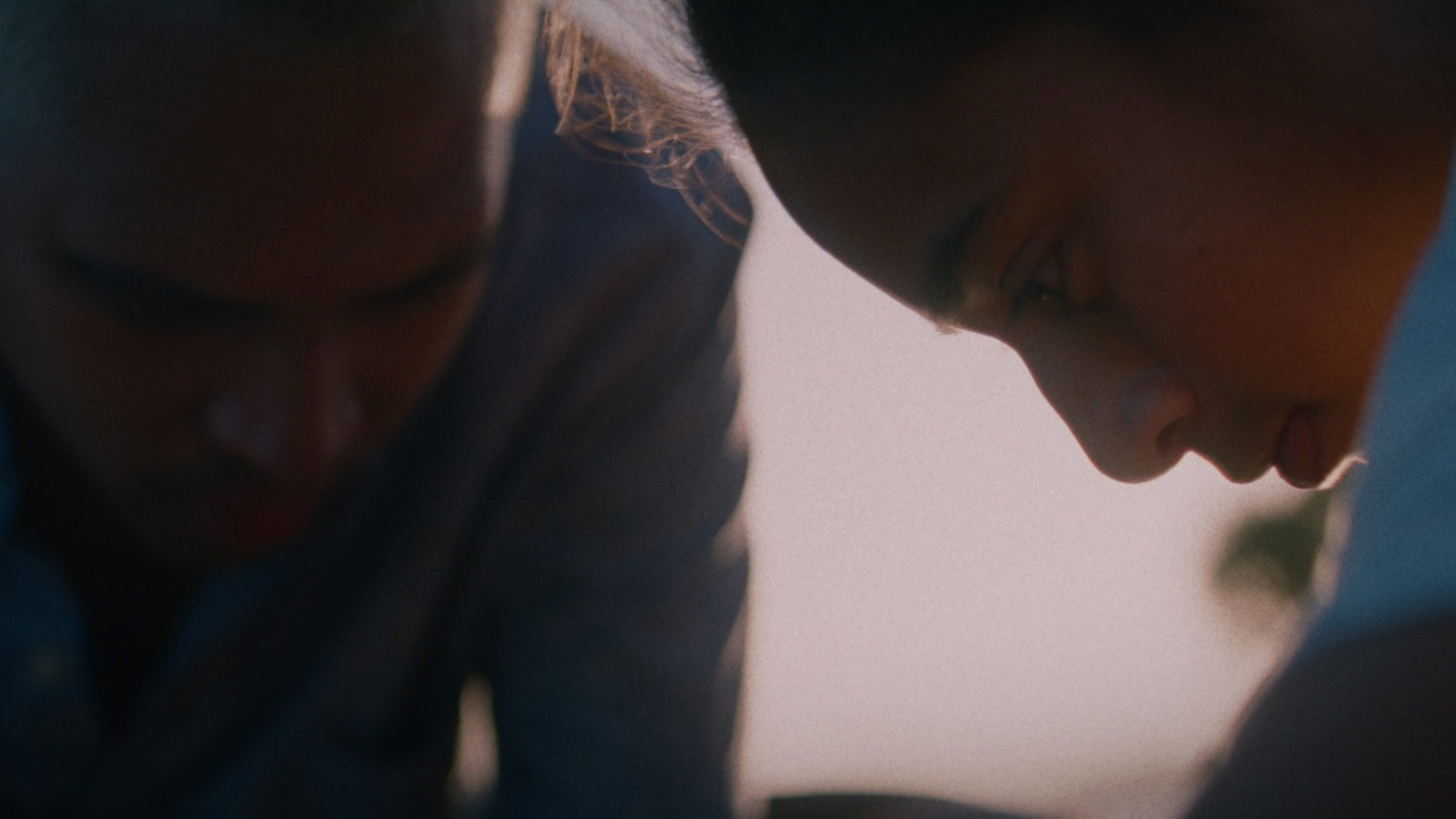
As Kainoa spends more and more time with Jonathan — played by young actor Achilles Holt — his love for the land and his Native Hawaiʻian culture shine through brightly. Kainoa takes great pride in passing down knowledge, nostalgically contrasting his familiar comforts against the corporatized overdevelopment of O‘ahu. He teaches his son how to fish and sail, relays the importance of cultural foods and music, and tells stories about the magical land of Moloka’i, where horses and deer run wild.
To create Kainoa — a character who is full of depth but also mired in challenges — Mandrial-Santos drew inspiration from his own family and personal stories. Kainoa is, in part, based on his uncle, while Jonathan is based on his cousin.
“Growing up, before my uncle had gone to jail, he was the charismatic uncle. Everybody loved him,” recalls Madrial-Santos, who adds that he still sees his uncle every week. “He took care of the family, but … he just went through problems.”
“[He] was someone who I looked up to,” Madrial-Santos continues. “We knew what he was involved in and stuff like that, but it was never seen in a way where what he was doing was… very wrong. We knew that he was supporting us, and we knew that he cared about our family.”
“Where we grew up, we saw so many people who are [fundamentally] good people… they just get caught up in things beyond their control, and sometimes it’s hard to shake a lot of those habits, unfortunately,” Tengan adds, regarding challenges his peers had faced with addiction. “That was something we tried to set up with each of these characters… [with] Kainoa trying to navigate like who he is, and ultimately, the man he wants to be.”
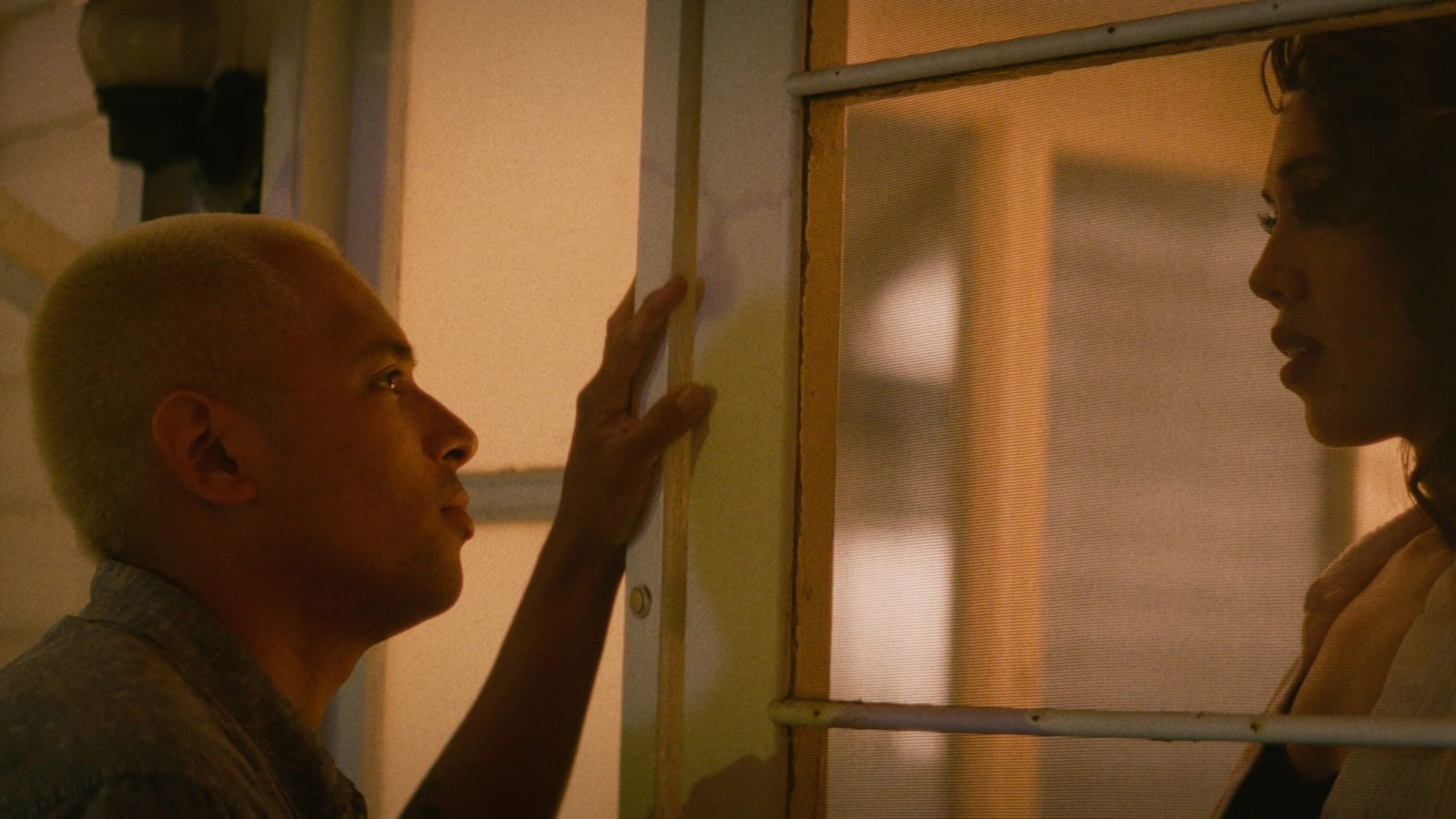
An Authentic Community of Non-Actors
In addition to being theoretically centered around familiar people and places, Moloka’i Bound also draws directly from the community with their choice of cast. Nobody in the film is a professional actor, which the filmmakers believed was necessary to preserve the authenticity of the story.
“It’s so hard, I think, to replicate [our upbringing],” explains Tengan. “It’s hard to cast people outside of that who don’t really understand it.”
For a story to be successfully carried by non-actors, Tengan stresses the importance of ensuring that they are “comfortable in their own skin.” He also adds that what attracted him to casting each of them was the fact that they were, off-screen, “very steadfast in who they are.”
One example can be found in community member Hale Natoa, who plays Hale, the parole officer that oversees Kainoa’s release from prison. Hale is depicted as a sympathetic and gentle figure, though he is simultaneously vigilant in making sure that Kainoa hasn’t returned to his old ways. In reality, Natoa was formerly incarcerated himself and is presently on parole now. He was able to share his real-life experiences to help the filmmakers shape the on-screen representation of parole, ensuring that it was believable and accurate.
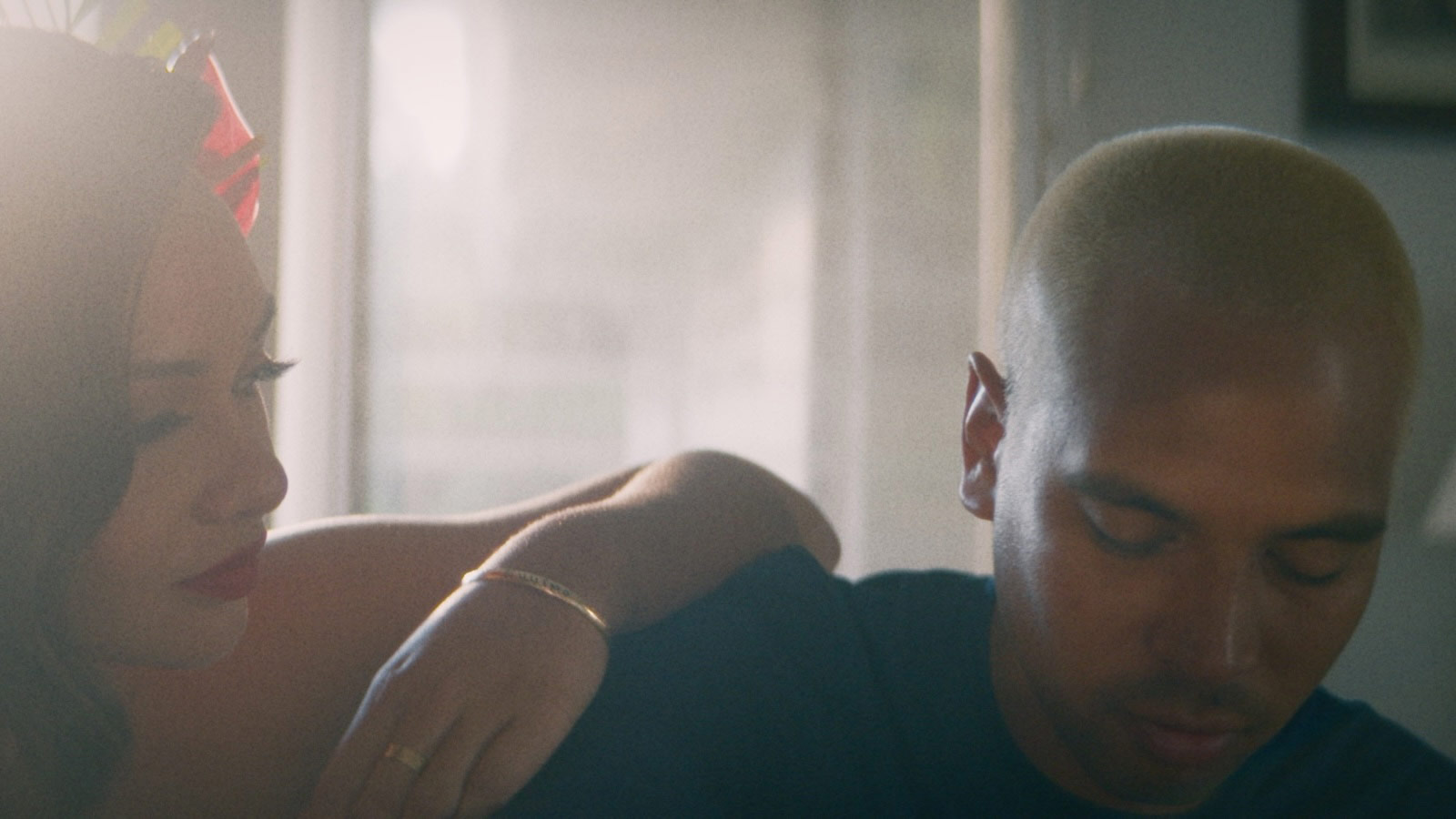
The Mystical Journey to Moloka’i
Native Hawaiʻian cultural touchpoints are ever-present throughout Moloka’i Bound, whether they are portrayed through language, food, or music. Many of the characters speak in Native Hawaiʻian or Pidgin Hawaiian, which can be difficult for non-locals to understand — and often, their words are not clearly translated. Hawaiʻian music is also omnipresent. It is heard on the radio, in headphones, or in the hands of Kainoa as he plays guitar, both solo and with his sister, who sings alongside him. Music becomes a vehicle for Kainoa to share with his son about Native Hawaiʻian food and culture; it also serves to highlight the ways in which their understanding of the world has grown apart while Kainoa has been in prison.
“Imbuing [the film] with Hawaiʻian music that we grew up listening to and loving and was kind of omnipresent in the background of our lives [was important],” says Tengan, who notes that Mandrial-Santos, who is also a musician, was one of the artists who contributed to the soundtrack. “I hoped [the music] would resonate for audiences beyond Hawaiʻi, because there’s so many talented Hawaiʻian musicians there.”
Another cultural touchpoint of significance is the island of Moloka’i. Throughout the film, Kainoa waxes poetic about the majestic island where his mother lives — and along the way, he endeavors to bring Jonathan there, in hopes of showing him lands that have yet to be spoiled by tourism and Western influence. Certainly, the importance of the island also plays a front-and-center role in the film’s title, but as the narrative unfolds, Moloka’i Bound leaves viewers wondering whether Kainoa and Jonathan will ever complete a journey there together. And even if they did make it, would the island hold any magic whatsoever? Or is its beauty simply in the mind of Kainoa, who is nostalgic for a past long gone?
Tengan first thought to partially set the film in Moloka’i due to the fact that his great-great-grandma lived on homestead land there. As he explains, “Spending some time there, we really got to understand the essence of Moloka’i and its peoples. My mom would tell me stories about going to visit her in the summers with her cousins… and how different Molokai’i is from O‘ahu.”
In the film, Moloka’i is certainly a place, but also seems to encompass the spiritual purity of Hawaiʻi, pre-colonization. The filmmakers wanted to do justice to the area while making sure to respect it and its inhabitants. How to find the balance was constantly a topic of collective conversation.
“Our producers that are on Moloka’i, [Mikiala Pescaia and Matt Yamashita,] were like, ‘Can you make sure you don’t make it look too attractive or beautiful… so tourists won’t come?'” says one of the film’s producers, Nina Yang-Bongiovi. “That was something that Alika had to be really thoughtful about. How much do you show?”
“That was an ongoing conversation with our Moloka’i producers, who were guiding us to make sure the way that we were trying to portray [Moloka’i] felt good to them, because they live there,” Tengan says. “It was definitely important to us that this didn’t feel like a tourist advertisement for the island, because we really want to preserve the way of life that they have over there.”
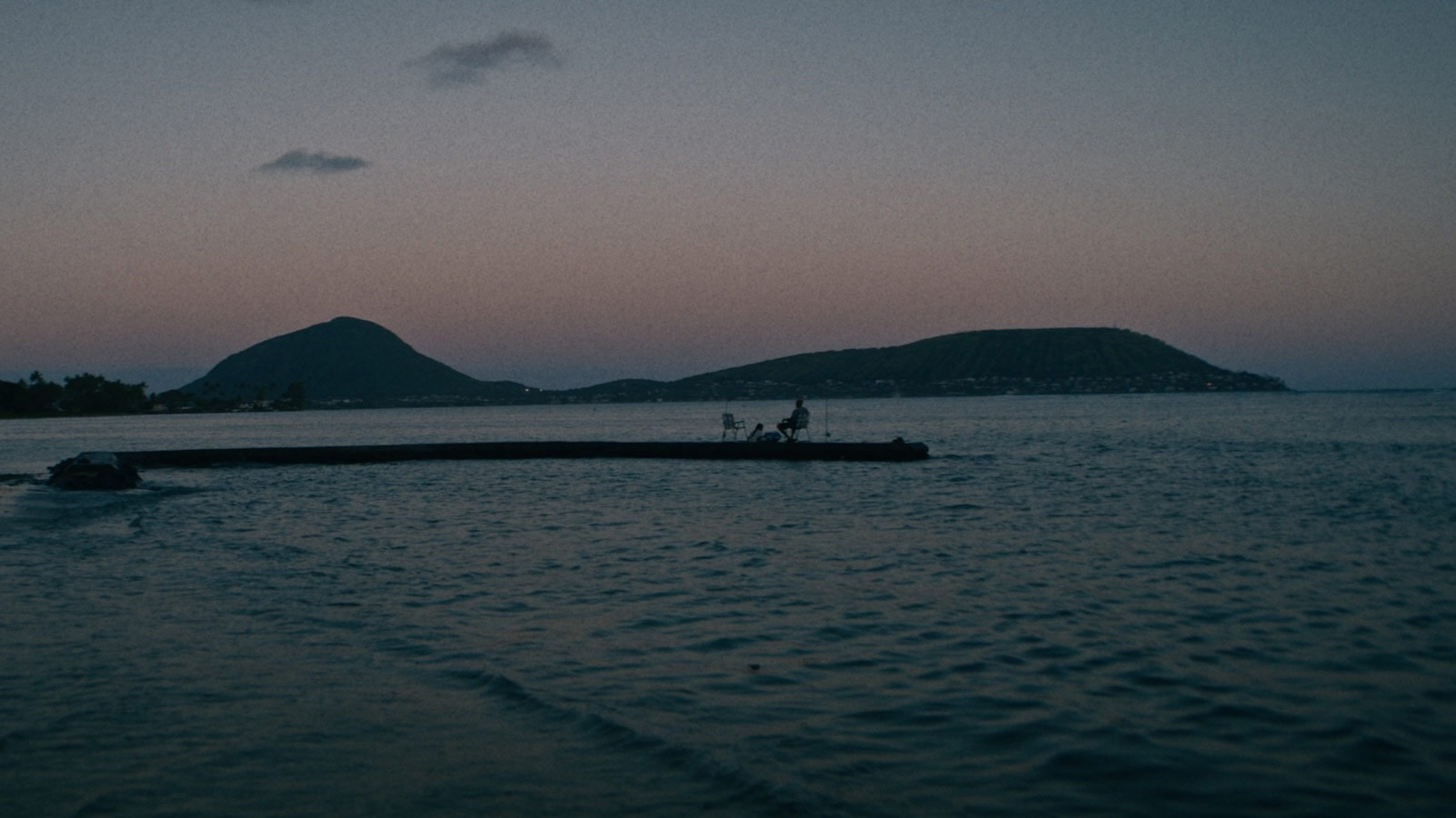
Native Hawaiʻian Cultural Specificity with Global Implications
Throughout Moloka’i Bound, the presentation of Native Hawaiʻian culture never feels too heavy-handed; it is always seamlessly woven into the solid, character-driven narrative and easily understood through the way that it is felt. Tengan’s experience watching films from all over the world played a vital role in his ability to display his culture on-screen.
“Having fallen in love with global cinema when I was in film school and watching films from around the world but having not been from those parts, [I understood] through context clues what they’re talking about,” Tengan explains. “I hoped that [in Moloka’i Bound], that’s the experience that other people [will] have who aren’t from Hawaiʻi or have never been to Hawaiʻi… Through context clues, [one] can kind of understand the feeling that we’re trying to convey, which is more important than the specificity of it.”
“It’s up to the filmmaker to tell the story they want, but it’s up to a diverse team of people that will give good notes from an outside perspective,” adds Yang-Bongiovi, who is also a co-founder of Significant Productions, a production company she in 2010 started with Forrest Whitaker. “Since I’ve been with this team, I would just assume that people will understand certain things — but when the editing was shared with advisors at Sundance [Institute], they would say, ‘What does that mean, or what does that mean?’ And they would come up with five different areas [of cultural significance that] they didn’t understand. I remember that Forrest Whitaker also came up with notes like, ‘What does that mean? Can you expound on… why pounding poi is a cultural practice?'”
Though Moloka’i Bound does not laboriously focus on topics of gentrification, displacement, or loss of culture, it does hint to these things through its presentation of Native Hawaiʻi. By some measures, Native Hawaiʻians comprise only 6% of the islands’ current population — or 21% if you include those who are part-Hawaiʻian. When one considers such real-life challenges, all of the film’s subtle cues take on a deeper meaning.
They also mirror the struggles faced by Indigenous communities worldwide, which are forced to live in colonized societies that disenfranchise them, subject them to higher rates of incarceration, and may be at odds with their customary ways of life. Thus, it follows that global Indigenous films inspired the genesis of this project.
Tengan and Moloka’i Bound cinematographer Chapin Hall first began to work together after attending Māoriland Film Festival. The festival booked them a car to take a day-and-a-half road trip from Ōtaki, Aotearoa, where the festival was held, to Auckland, New Zealand. Though they hadn’t worked together prior, they were so inspired by watching all the Indigenous films at Māoriland that they spent their drive mulling over a quick project they could shoot together in Hawaiʻi. Thus was born the short film for Moloka’i Bound (2019). Tengan and Hall’s relationship only blossomed from there, and Indigenous films continue to influence their work to this day.
“Meeting [other Indigenous filmmakers] from all over all over the world [and] seeing the connection that all these communities have in the stories that we share… was really amazing to me,” Mandrial-Santos recalls, describing his feelings after attending the LA Skins Festival which focuses on Indigenous films. “[Our subject matter] felt insular to where I was from… but for them to connect to the stories that we were telling and to hear theirs as well… it really opened my eyes.”
Ω






